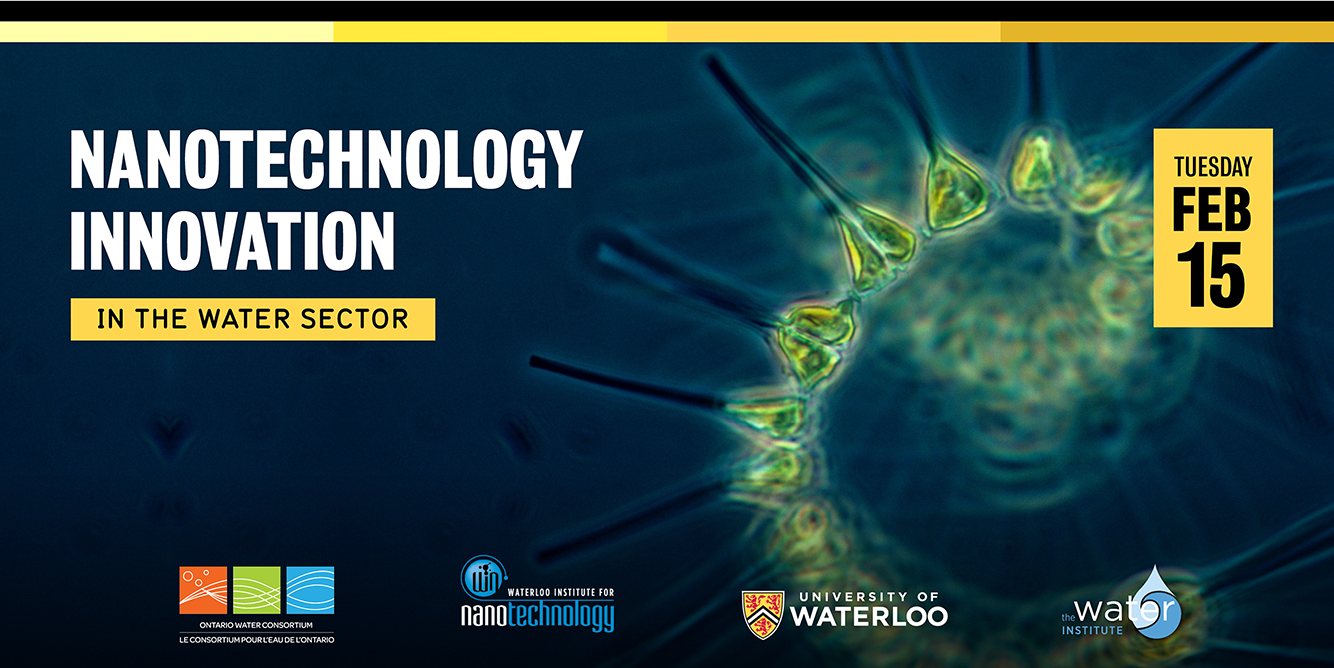Today’s water industry faces many challenges — from addressing hard-to-remove contaminants in drinking supplies to making wastewater treatment as energy-efficient as possible, cutting costs and carbon emissions. Could nanotech hold the answers?
Dr. Sushanta Mitra, executive director of the Waterloo Institute for Nanotechnology, believes so. “We are able to utilize the surface properties in a much, much better way than conventional technologies,” he explains. That ability to modify materials at the atomic level opens up a world of possibilities.
To explore them, the Waterloo Institute for Nanotechnology and the Water Institute at the University of Waterloo have teamed up with the Ontario Water Consortium to organize “Nanotechnology Innovation in the Water Sector.” This virtual workshop — to be held on February 15, 2022 — brings together researchers, institutes, end users and other stakeholders.
The 90-minute event will showcase seven researchers from the University of Waterloo who are pioneering everything from nano-cellulose systems that treat wastewater to DNA biosensors that can detect contaminants. They’ll each get the chance to pitch their innovative ideas and then discuss commercialization challenges and opportunities with industry experts.
“I think this is a great opportunity to have interdisciplinary research centres working with end users and community partners and industry to create a sustainable impact,” says Dr. Mitra. “We haven’t seen that kind of a synergy happening previously.”
Quantum leaps in water tech
One of the presenters will be Dr. Carolyn Ren, a mechanical engineering professor and director of the Waterloo Microfluidics Laboratory. Dr. Ren has worked with tiny tech for years, taking advantages of chemical and electrokinetic processes to create a variety of lab-on-a-chip devices.
The palm-sized units allow users to analyze samples of blood, water and other fluids right on site, rather than sending their samples to a distant lab and waiting weeks for results. And unlike traditional methods, microfluidic approaches make it possible to detect harmful substances at extremely low concentrations.
Now, Dr. Ren is raising the bar even further by adding nanoengineered elements to her devices. That includes incorporating nanoparticles that improve virus detection or quantum dots “decorated” with biomolecules that help diagnose diseases.
Her work holds intriguing possibilities for the water industry. For example, water treatment plants currently rely on periodic sampling to detect contamination in their incoming water. Instead, Dr. Ren envisions a device that continuously monitors that water and provides real-time results. “A microfluidic covered with nanomaterial could do that,” she says.
Making a splash in the real world
Dr. Ren has launched a number of startups to commercialize her research. One of those is QuantWave, which focuses on AI-enabled sensor technology. The company produces microfluidic devices that can monitor wastewater for a number of parameters — including biological oxygen demand, turbidity, phosphate and E. coli.
Now, Dr. Ren is exploring ways to employ nanotechnology to boost the ability of their sensors to detect metal ions. One collaboration focuses on developing systems that would allow First Nation communities in northern Ontario to monitor their lakes for toxic metals. She’s also investigating how incorporating gold nanomaterials into the microwave sensors within her devices could enable them to detect COVID-19 viruses.
“I love fundamental research,” she says. Over the past 20 years, her contributions have advanced the field of microfluidics in a big way. But what drives her today is a desire to create solutions that address real-world problems and improve quality of life.
The water sector provides a perfect vehicle. However, breaking in isn’t easy. The industry is governed by strict regulations designed to protect human health, so it tends to be conservative about adopting new technologies.
Another challenge is turning lab-bench successes into commercially viable systems. Dr. Ren has already found ways to make her sensors more affordable, but she still needs to bring the costs down further. She’s also focussing on making them as simple to operate as possible. “I want to make the systems so sturdy and so user-friendly,” she says.
Clearing the path to adoption
Those issues will be a big focus of the February workshop. “I think it will be quite an important exercise for researchers to connect with the end-user community to see the appropriateness of their technology,” says Dr. Mitra. “And see if they can receive feedback [on] how they can improve on their technology and make it more adoptable.”
Ultimately, he believes nanotechnology has the potential to significantly cut energy use and put important tools in the hands of communities that need them most. That’s especially important now, as more and more industries — including the water sector — aim to reduce their environmental footprint, serve more people and achieve increasingly stringent targets.
“Nanotechnology becomes a game-changer in terms of providing that opportunity to create sustainable materials, sustainable products, sustainable solutions,” says Dr. Mitra.
Learn more about the “Nanotechnology Innovation in the Water Sector” workshop
Date: Tuesday, February 15th, 12:00 – 1:30 pm


